Alum Turns Adversity into Achievement
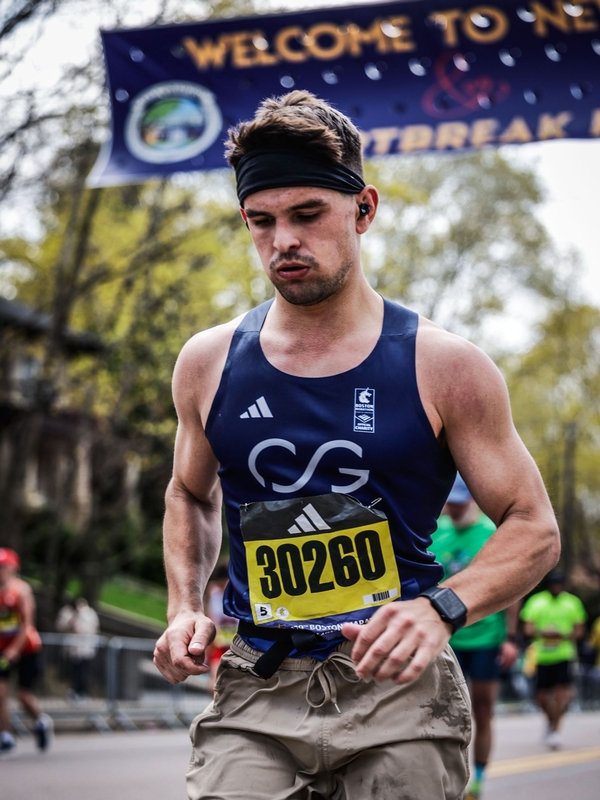
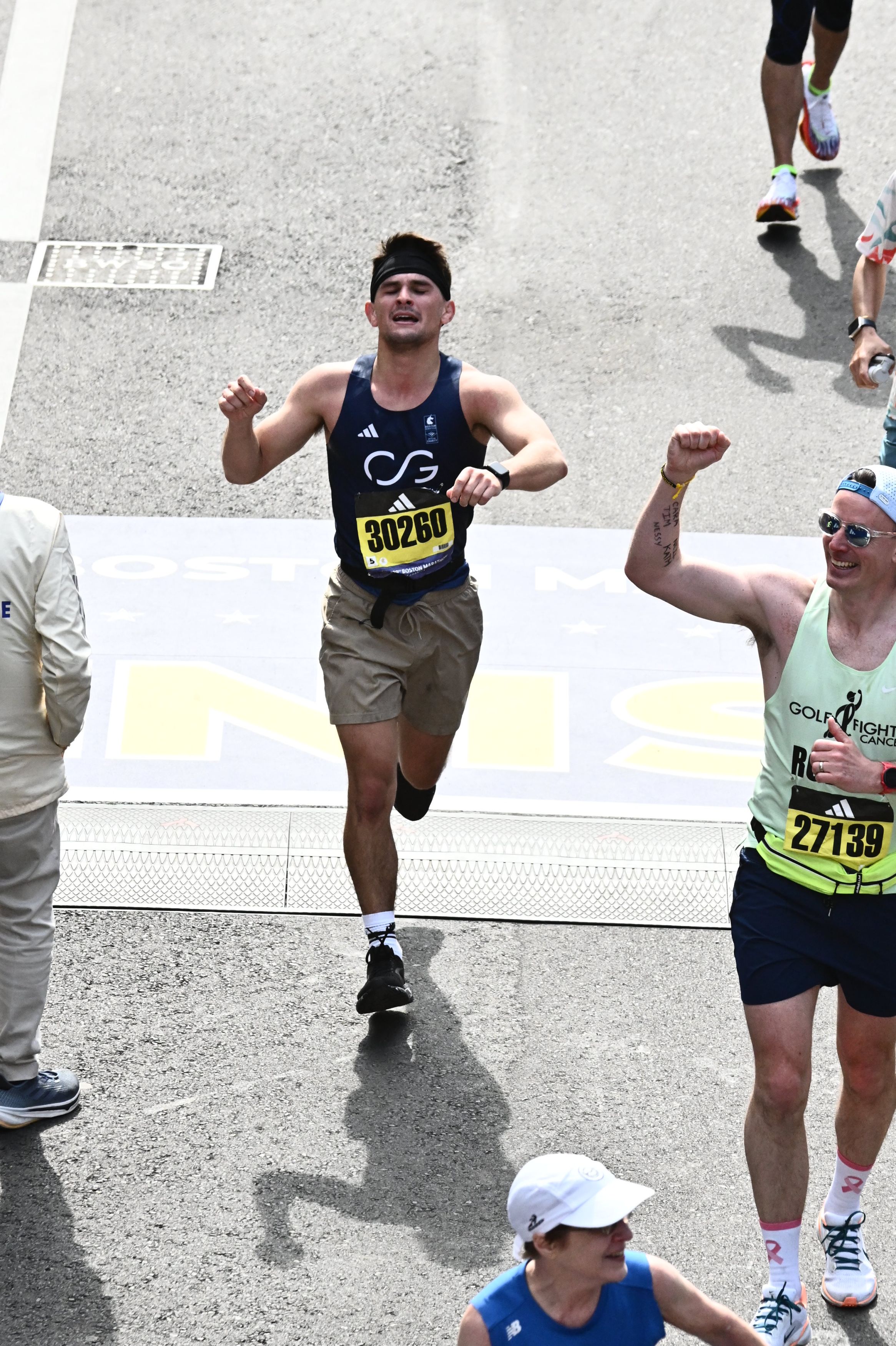
Over the past year, Sean Fee (’12) has been focused on personal growth and pushing his limits—both mentally and physically.
Drawing on his professional background as a mental performance coach, he set out to challenge himself in a new way.
So, he ran the Boston Marathon.
“I have always leaned on exercise as being the foundation of my mental health, but when I was faced with the challenges that life has recently thrown at me, I needed something bigger,” Fee said. “I needed a goal that would fuel me to continue being the best version of myself and that would force some self-discovery along the way. So, when the thought came to me of running a marathon, I figured I might as well do the toughest, most famous one in the world.”
This past Monday, April 21, he started and finished the 129th Boston Marathon.
Fee, who was a wrestler during his time at Lake Catholic, has since become a Mental Performance Coach for athletes and coaches. He is currently the Director of Mental Performance for The Golf Room, working with athletes and coaches from all sports on topics such as stress and adrenaline management, growth mindset, acceptance, routine, visualization, goal-setting, body language, mental toughness, optimism, rewiring an anxious brain, postseason prep, and much more.
He's worked with both the Lake Catholic wrestling and swimming & diving teams over the past few years.
He’s also the host of The WellSport Podcast, which has reached the top 10% of all video podcasts as he’s interviewed Olympians, National Champions, Sport Psychologists, Major League Baseball Mental Performance Coaches, and even Michael Jordan’s Mental Coach - George Mumford.
All of this proved helpful while preparing for, and then finally running, the grueling 26.2 miles.
“I chose Boston for this very reason. It is the most mentally challenging sanctioned marathon that exists, and I wanted to put all my mental tools to the test - and they made all the difference,” he said. “What I think helped most was the ways I tested my mental game before the race by doing weekly challenges designed to purely test my mental resilience. So, I did things like running a half-marathon with a 20-pound weighted vest on, so when race day came, not having to deal with that was a luxury.”
Fee, who said prior to training for the marathon he would typically not run more than three miles at a time, said he trained heavily for about 6 months for the race, and although it was tough to train during the winter, he said it gave him a reason to get outside when he felt cooped up.
“Those long runs all winter also made me appreciate the 60-degree and sunny race-day weather in Boston that much more,” he said.
Again, though, on race day, it was his mental preparation that had him more ready despite all the running he had been doing.
“There is a study I always cite in my mental performance work that I do where, if you accept the fact that you have a challenge ahead of you, you are more likely to overcome that challenge,” he said. “So that’s what I did. I knew it was going to be incredibly difficult, and it sure was. That said, I don't think anything besides running the actual course can truly prepare you for the rolling hills of the entire course.”
Fee said he didn’t have a specific goal time in mind, but he just wanted to run as hard as he could but ended up being very pleased with how he ran and his ultimate time. He averaged 9 ½-minute miles and finished in around 4 hours and 10 minutes.
“What I'll say is that Marathon Monday in Boston isn't actually about the competitiveness of the race. People cheer just as hard for the fastest runners in the world as they do for the people finishing in six hours. It is about the stories behind the people running and what they have gone through to get there. Most are running because they've dealt with some adversity, and the marathon is a way to heal. It is a beautiful thing to witness and something I encourage anyone, whether a fan of sports or not, to one day see in person.”
Lake Catholic Students Shine on the National Latin Exam
“Eximium opus tuum nito”
(Outstanding work on your exam)
Lake Catholic is proud to recognize the outstanding achievements of our Latin students who recently participated in the National Latin Exam (NLE), an annual academic competition that challenges students across the country in their understanding of the Latin language, culture, and reading comprehension.
Included as part of the more than 100,000 students worldwide who took one of the exams, our Cougars demonstrated exceptional dedication and academic excellence, earning national recognition for their performances.
Junior Max Bock, a standout in the Introduction to Latin exam, scored an impressive 39 out of 40, well above the national average of 30. His achievement earned him the prestigious Gold Summa Cum Laude award—an honor reserved for the top-performing students nationwide.
On the Introduction to Latin exam, there are 40 questions on grammar, comprehension, mythology, derivatives, literature, Roman life, history, geography, oral Latin, and Latin in use in the modern world.
“Honestly, I expected to do well, but I was not sure I would get a gold medal since it changes from year to year,” said Bock, who is in his first year of Latin after studying German during his first two years at Lake Catholic. “I think the hardest part of the exam was dealing with unfamiliar words or conjugations, since the test was for students more advanced than we were.
“I think Mr. Bergdorf's way of teaching is simple, but he explains it well, and he emphasizes that repetition is key. He taught us the principles behind how the language works, which enabled us to use logic and figure out unfamiliar terms or phrases.”
On the Beginning Latin Reading Comprehension exam, junior Owen Pesek also brought home a Gold Summa Cum Laude award with a score of 34 out of 36, surpassing the national average of 27. His strong reading skills and commitment to classical language study truly paid off.
The Beginning Latin Reading Comprehension Exam contains two Latin passages as the basis for 36 questions on grammar, comprehension, historical background, classical literature, and literary devices.
“The hardest part of the exam was the time constraint - we had 40 minutes to complete 36 questions, said Pesek, who’s in his third year of Latin after studying Spanish in middle school. “I think the combination of Mr. Bergdorf's lessons and the test prep that he put us through helped me succeed on the exam. He did his best to help us prepare for the exam by giving us multiple pre-tests and exam-guided lessons.
“Mr. Bergdorf is very passionate about teaching. He is also an expert in almost everything you ask him about. He loves to teach us new things, and I think this is the only reason I want to continue taking Latin for a fourth year.”
Several other Lake Catholic students earned honors for their outstanding performances:
Introduction to Latin Exam:
- Silver Maxima Cum Laude: Julie Cordova (freshman), Chance Wuhr (sophomore)
- Magna Cum Laude: Ivana Cmeljesevic (senior), Brady Moran (sophomore), Shaun Foley (senior)
- Cum Laude: Finnigan Kilbane (freshman)
Beginning Latin Reading Comprehension Exam:
- Silver Maxima Cum Laude: Juliana Swenson (junior), Keira Schulz (junior)
- Magna Cum Laude: Brian Debevec (junior), Berlynn Beard (junior), Keira Nemeth (junior)
Overall, 56% of those from Lake Catholic who took the Introduction to Latin Exam scored at the national average or higher. That number jumped to 89% for the Reading Comprehension exam.
“I’m so proud of all our Latin students. The work they’ve done this year has been exemplary,” said Latin teacher Kevin Bergdorf, who’s in his first year at Lake Catholic. “The National Latin Exam is a great test for our students, who really only got three quarters to prepare for it.
“There are kids around the country who have been taking Latin since they were in elementary school and take one of these exams every year. So, for this being their first time taking the exam, I’m really pleased with how they scored.”
We commend all our students for their hard work and enthusiasm for the Latin language and ancient Roman culture. Their success on the NLE reflects not only individual academic strength but also the passion for learning fostered in our classrooms.
The students will receive their medals and awards at the school’s Honors Assembly on Thursday, May 8.
Art Students Turn Service-Learning into Valentines

One of the Lake Catholic core values is “a willingness to serve.” The sign that you see when you leave the school parking lot reads “Exit to Serve.” All students must complete 50 hours of service to graduate and have 80 hours to qualify to wear the Service Cord at commencement.
Service is woven throughout the fabric of the Lake Catholic school year – service projects on and off campus, Turkey Day, Meal Ministry, Pallbearer Ministry, and the list goes on and on.
Service-learning, though, is another form of service – one that second-year art teacher Carolina Kane hopes to bring more of to her classes with the hope that it spreads throughout the school.
“I’m trying to bring service-learning into what I do in my classroom,” Kane said. “It’s actually a goal of mine. I want it to be incorporated into my curriculum. It’s what I did when I worked at John Carroll, and I want to bring that type of service here.”
Service-learning is more than just a beach cleanup, raking leaves, or shoveling a driveway – although all of those things are important. Service-learning incorporates the learning aspect of the classroom with the service.
So, although Kane’s Art Foundations class and the Art Club seemingly just made Valentine’s Day cards, there was more to it than that.
“We did these before Thanksgiving, so it was one of the first actual design projects we did,” Kane said. “But it was more than making the cards. It was how they interacted with the card. How did the paper feel in their hands? What colors made sense to use? What font and font sizes made the most sense for this project?”
Although it was a real classroom lesson and project for Kane and her students, the service part of it will have a much broader reach.
As a school, nearly 100 cards were donated to the Lake County Council on Aging’s Meals on Wheels program to be delivered on Valentine’s Day. In total, from nine schools, more than 1,400 cards were collected for distribution.
“When people receive these cards, most of them are just so excited,” said Kelly Johnson, who helps Meals on Wheels spearhead the Valentine’s Day card initiative. “You can just see on their faces how much it means to them and that it makes their day.”
The cards were made before Thanksgiving because Johnson and her team of volunteers have to inspect each card by hand because there is a list of things that each one can, or can’t, say on it.
“Carolina and her students’ cards were awesome,” Johnson said. “While it usually takes us hours to go through a school's cards, I don’t think we spent more than an hour on the cards from Lake Catholic. They followed the parameters perfectly. Every person that hand-checked the cards from Lake Catholic loved them and came away very impressed.”
While a student at the Cleveland Institute of Art, Kane worked as a photographer and visual storyteller with John Carroll’s Center for Service and Social Action (now the Center for Service-Learning and Social Action), which is where she was then hired when she graduated from CIA. And she said service-learning is something she’s always been drawn to and wants to bring more of here at Lake Catholic.
“We see it all the time here – the spirit of giving and service,” she said. “It’s right there in the mission of Lake Catholic. I just want to continue to help our students appreciate their important role of service, but while also learning.”
According to the Council on Aging’s website, Meals on Wheels delivers food five days per week, with an option for frozen meals for the weekend. According to a study conducted by Brown University and funded by AARP Foundation, home delivered meals improve overall health, reduce anxiety and depression, decrease feelings of loneliness and isolation, and help seniors feel more safe and confident about living in their own home.
Freshman English Classes Benefit from Cross-Department Collaboration
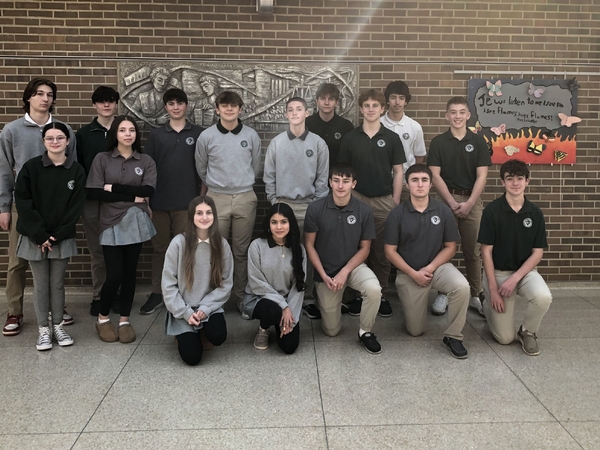
Sometimes a lesson in one of your high school classes was just that, a lesson - something you needed to learn and know, something you had to study for a test, something you would use in future lessons.
Sometimes, though, a lesson is much, much more than that.
Miss Tabitha Halcomb’s freshmen English classes each read Night by Elie Wiesel. The 1960 memoir is based on Wiesel’s Holocaust experiences with his father in the Nazi German concentration camps at Auschwitz and Buchenwald in 1944–1945, toward the end of the Second World War in Europe.
According to Halcomb, the text heavily addresses indirect and direct characterizations, symbolism, and themes. So, that might be enough for a freshman English class, especially considering the subject matter itself.
But there’s more to it for these two sections of English 9.
“I also use this memoir to discuss central connections between literature and history through exploring the Holocaust and aftermath through Elie Wiesel’s perspective/life story,” Halcomb said. “Also, this text is central in teaching and discussing Catholic social justice principles and their connections to Elie Wiesel’s life experiences and story throughout his time in Auschwitz as a Holocaust survivor.”
This year, however, Halcomb has added even more to the lesson plan. She has partnered with Visual Arts Department Chair Kelly Wolf and brought her two classes to Wolf’s art room so they could work on their very own Butterfly Projects.
“I truly enjoy doing cross-department collaboration throughout the school year,” Halcomb said. “I think it’s important for the students to learn from me and so many other teachers throughout the school. It really helps all of us build and maintain good relationships with others across campus and connect as the Lake Catholic family. Also, I really love the combination of teaching art and literature together. Anytime I can make that happen, I think it brings my students joy and really makes the content come alive in a meaningful, memorable, and real way for them.”
Wolf said this is not the first time she’s been involved with cross-department collaboration. She’s worked with several teachers from the English, social studies, and science departments in the past.
According to its website, The Butterfly Project is a call to action through education, the arts, and memorial making. They teach social justice through lessons of the Holocaust, educating participants about the dangers of hatred and bigotry to cultivate empathy and social responsibility. By painting ceramic butterflies, which are displayed as symbols of resilience and hope, participants remember the 1.5 million children killed during the Holocaust.
The students have sketched and designed their butterflies, built them with clay, painted them, designed their butterfly boards, and will eventually display them once their projects are completed.
“I thought the project was worthwhile,” Wolf said. “The students had fun creating their butterflies. It was apparent that many of them had never worked with clay before though. They spent a lot of time working on their background and how they were going to incorporate a quote from the story. Many of the students really tried to make their butterflies look real. Others were just having fun experimenting with color.”
The final Butterfly Projects were put out in Main Hall this week, where they will stay as a silent reminder of the project and its larger meaning.
“The students have asked so many questions about this unit and have shown real passion for it,” Halcomb said. “They have been most surprised about the reality of anti-semitism, how it led to the Holocaust, and the outcome of it for the Holocaust survivors’ lives.
“Elie ends up in Auschwitz at the age of 15, so the students connected strongly with many of the questions that he has about his relationship with God, his family, friends, himself, and life. Many of the students shared that they couldn't believe he could “find joy after so much pain and hatred that Elie experienced in his life. We have had good conversations about how to deal with major problems in the world and the importance of our words and sharing our stories.”
The lesson was to include another piece as well – a trip to the Maltz Museum. The goal of experiencing the Maltz Museum was to participate in the “Stop the Hate” writing workshop, discuss and reflect on Jewish influence on social, historical, religious, and economic growth in Cleveland, and hear another story from a Holocaust survivor.
Because of the calamity days in late January, though, the trip was canceled. Halcomb said she would want to incorporate the field trip into next year’s lesson.
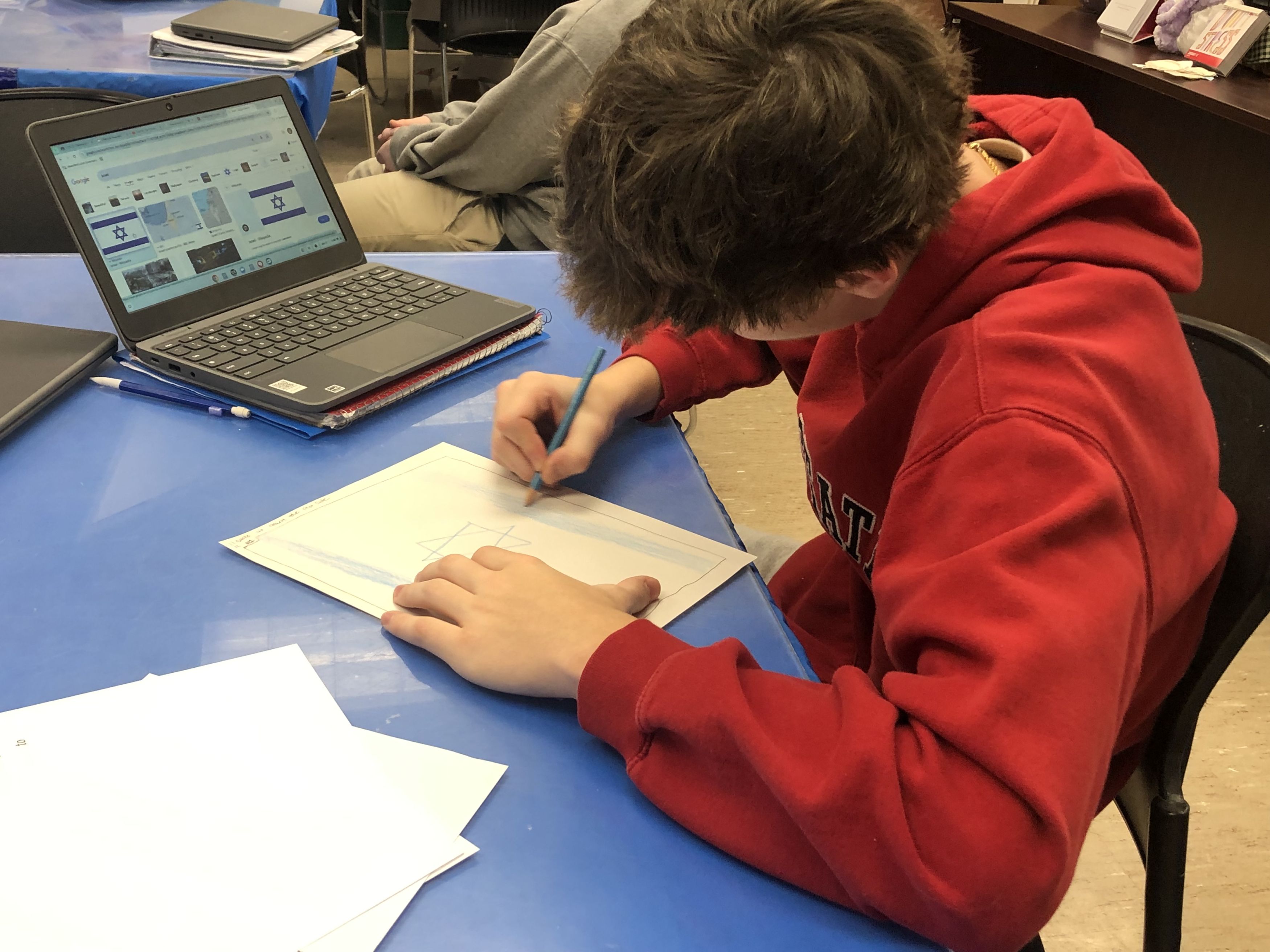
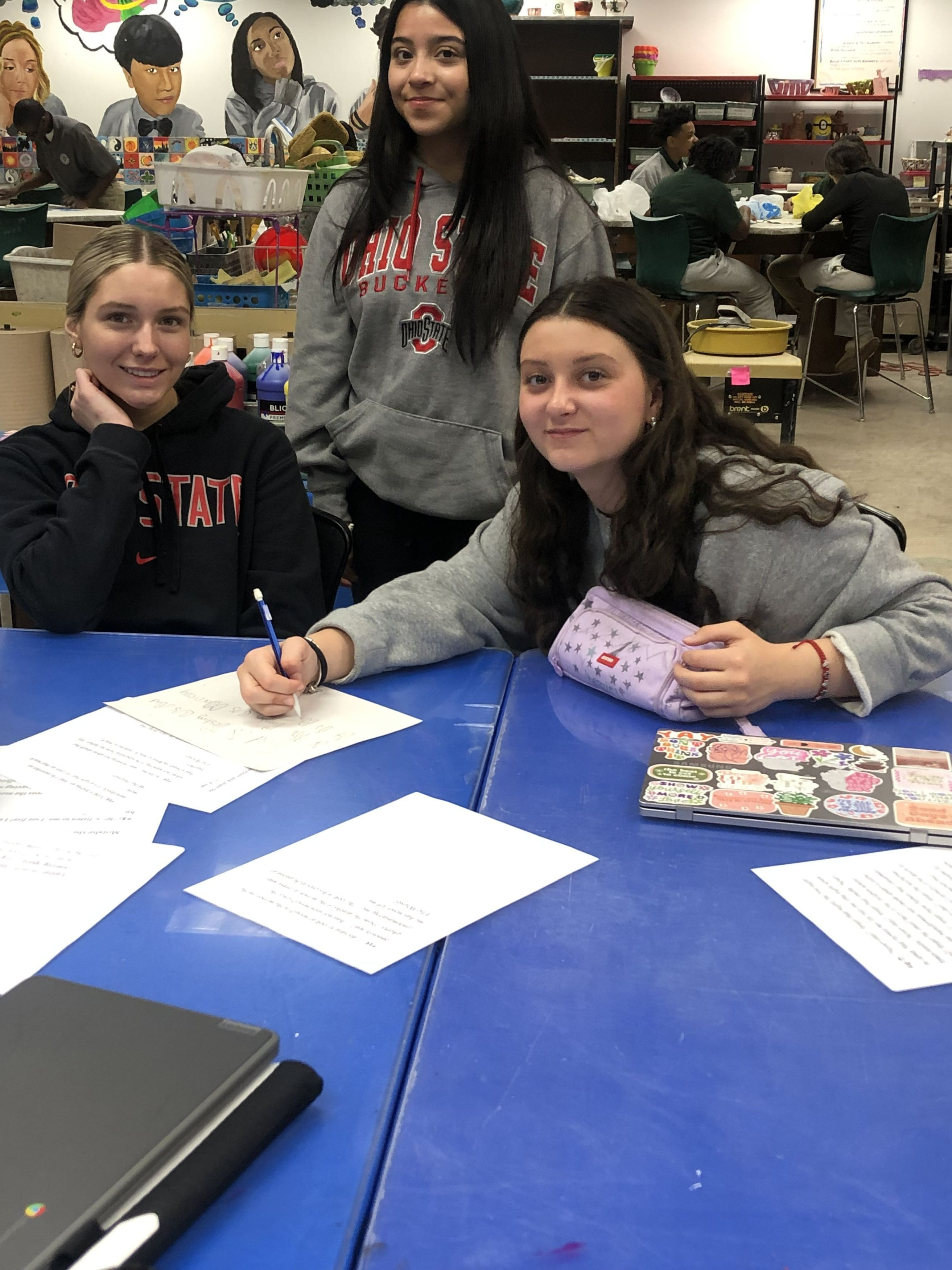
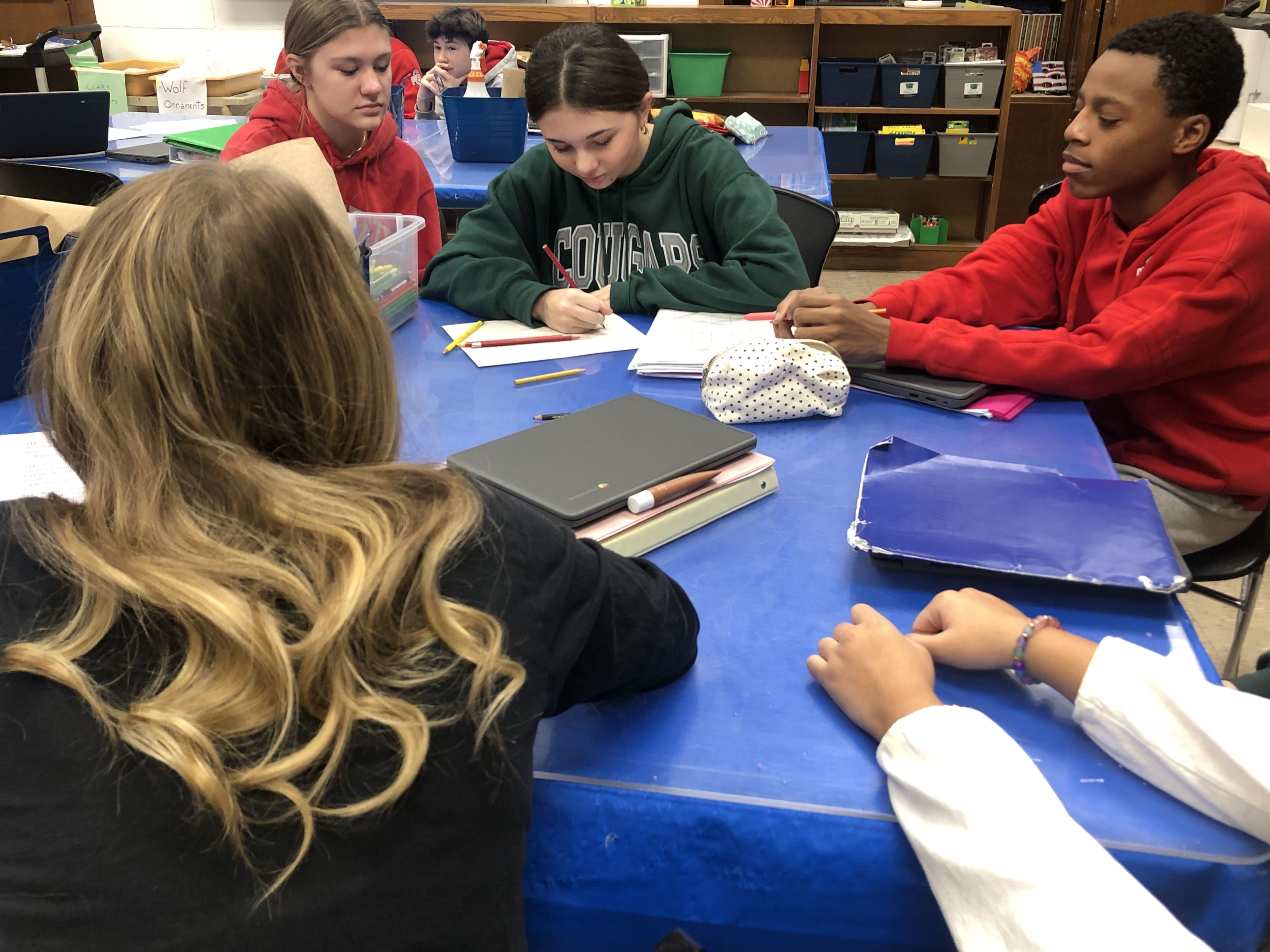
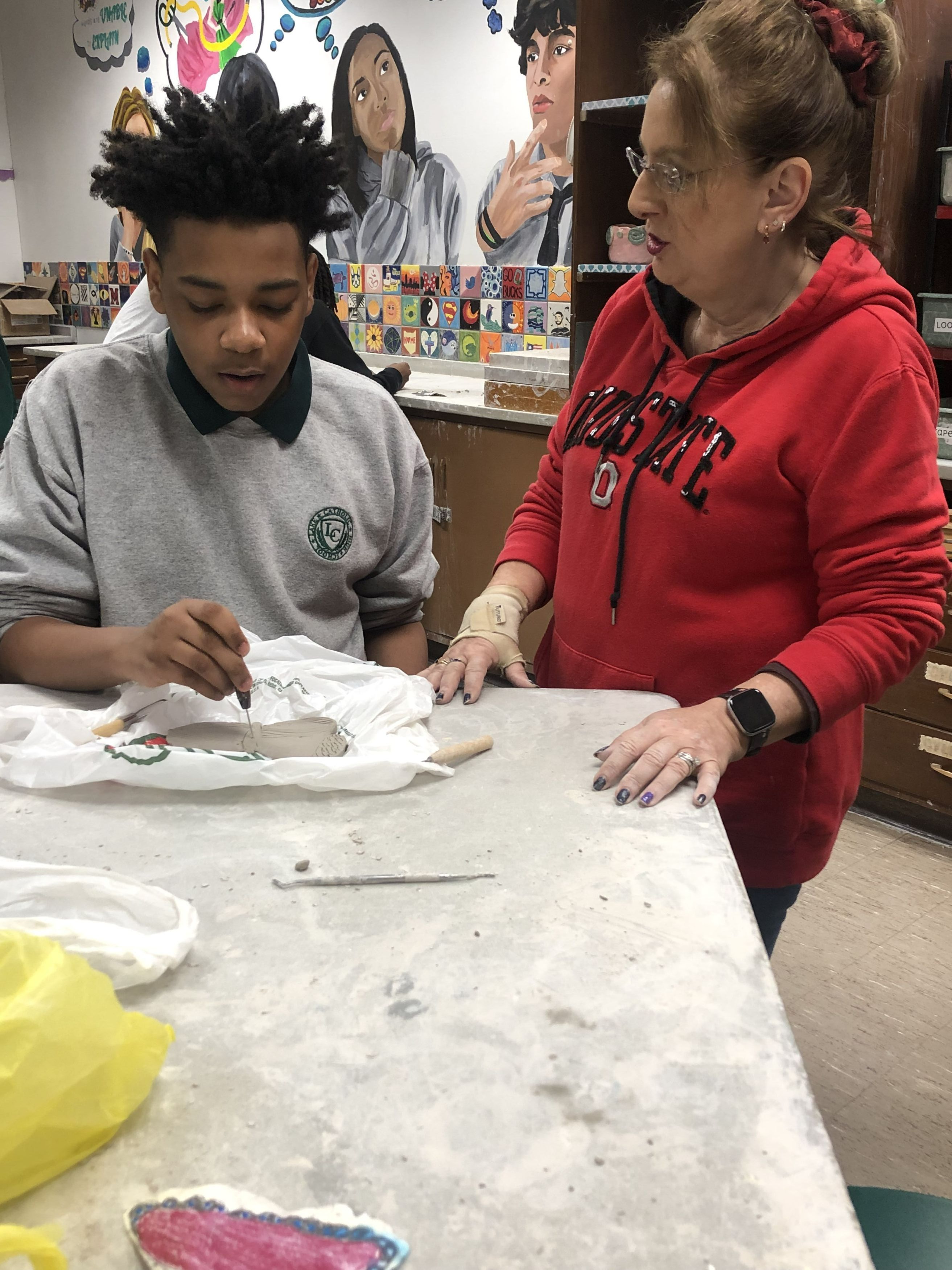
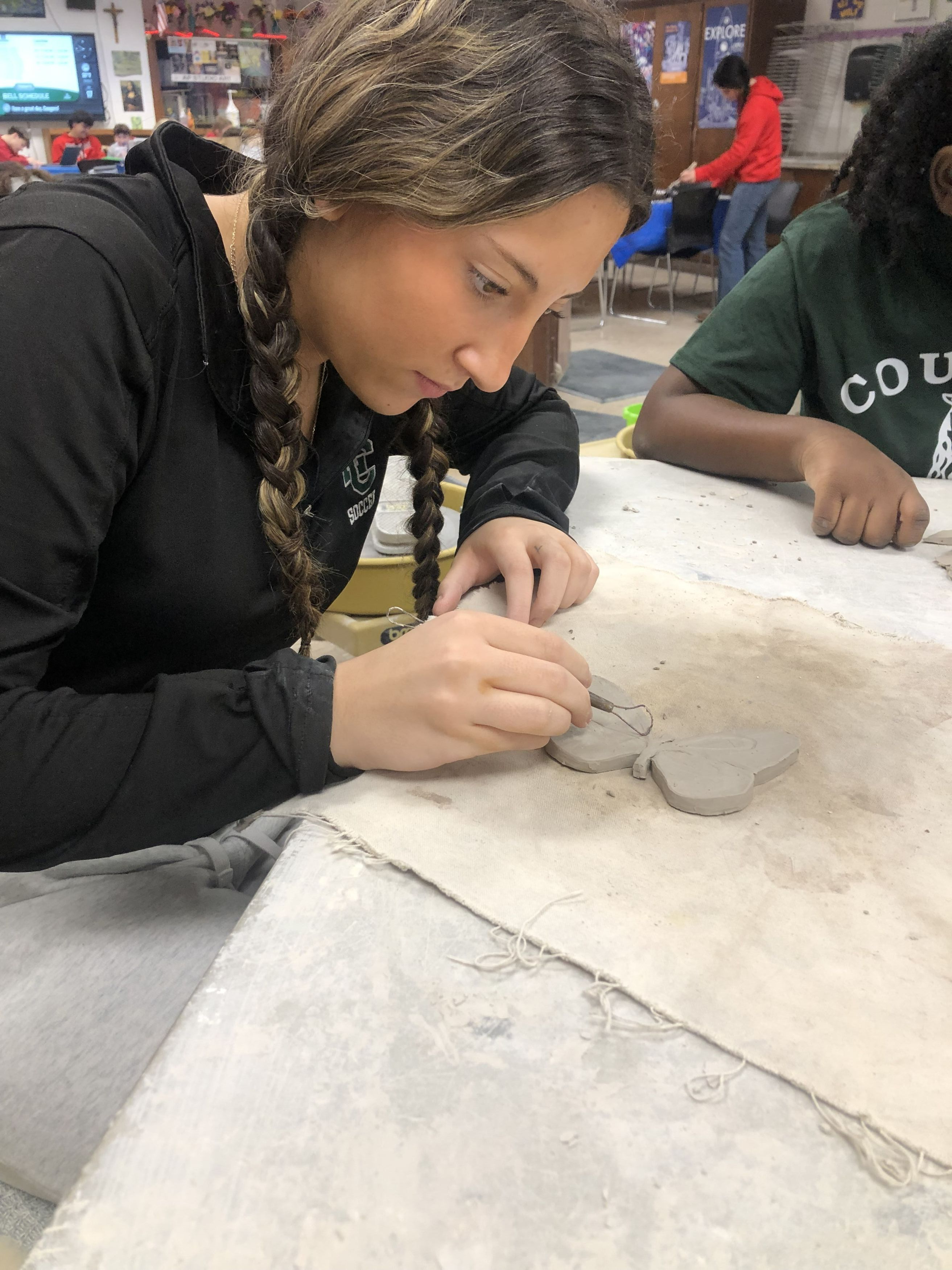
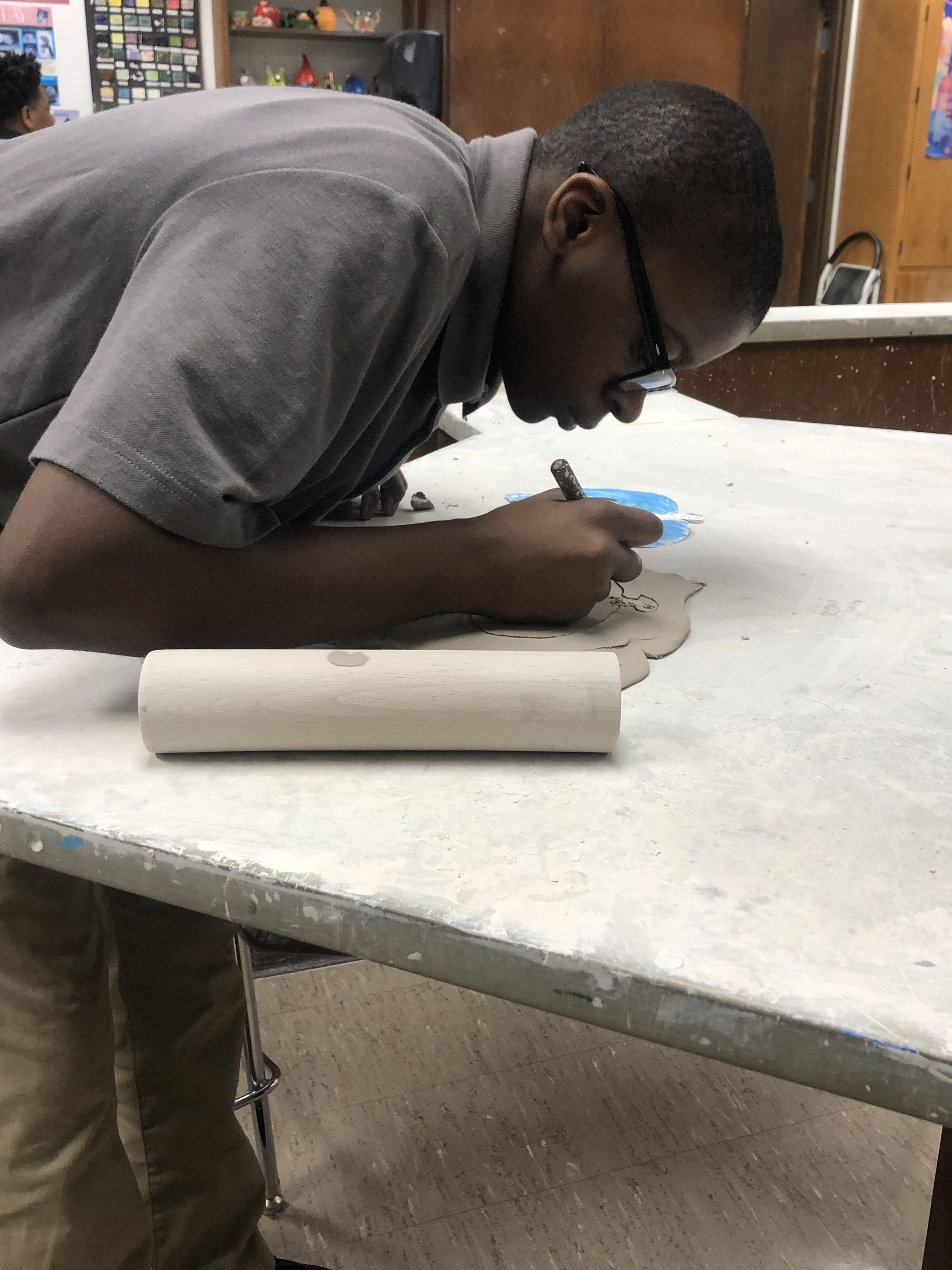
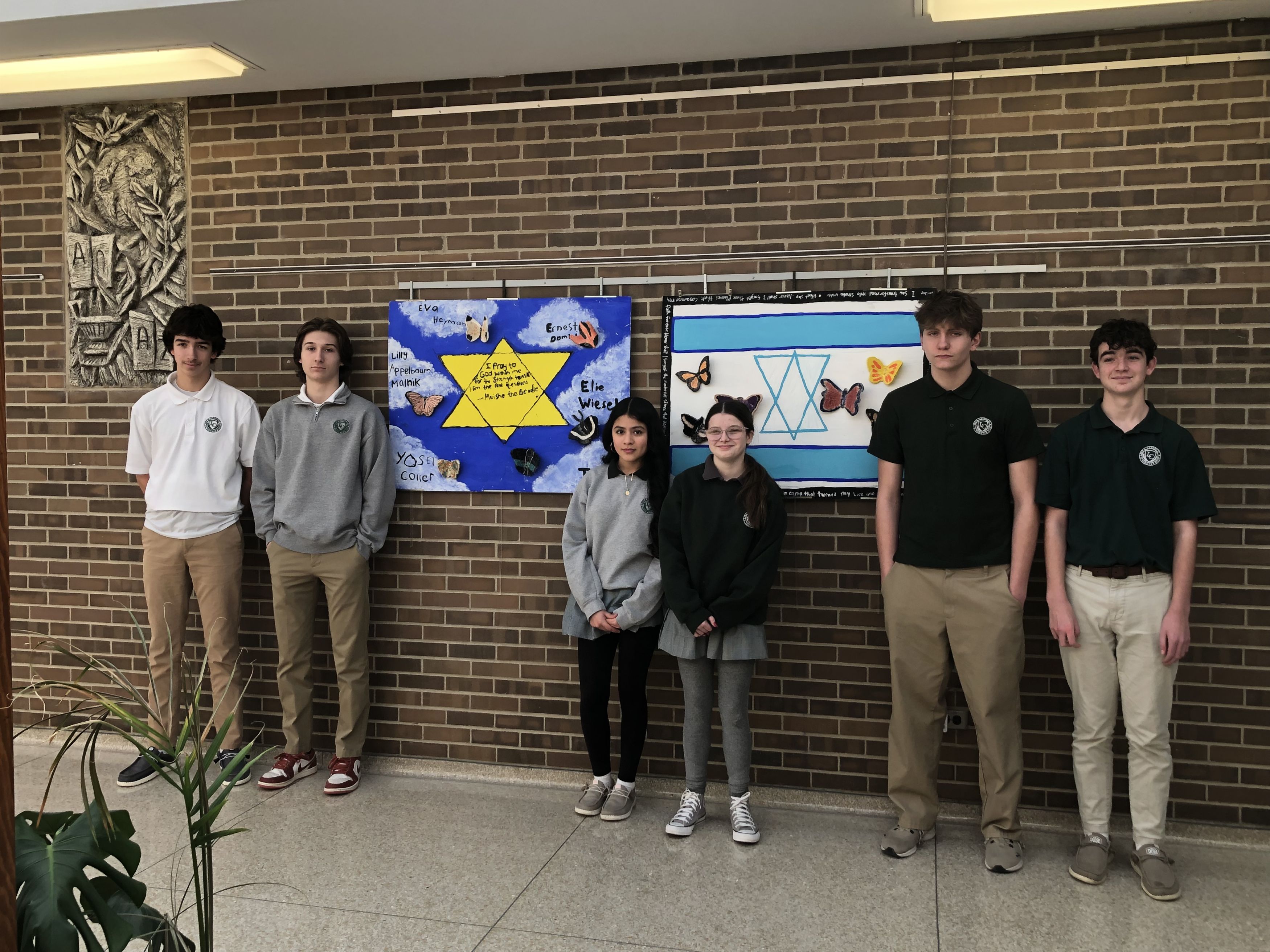
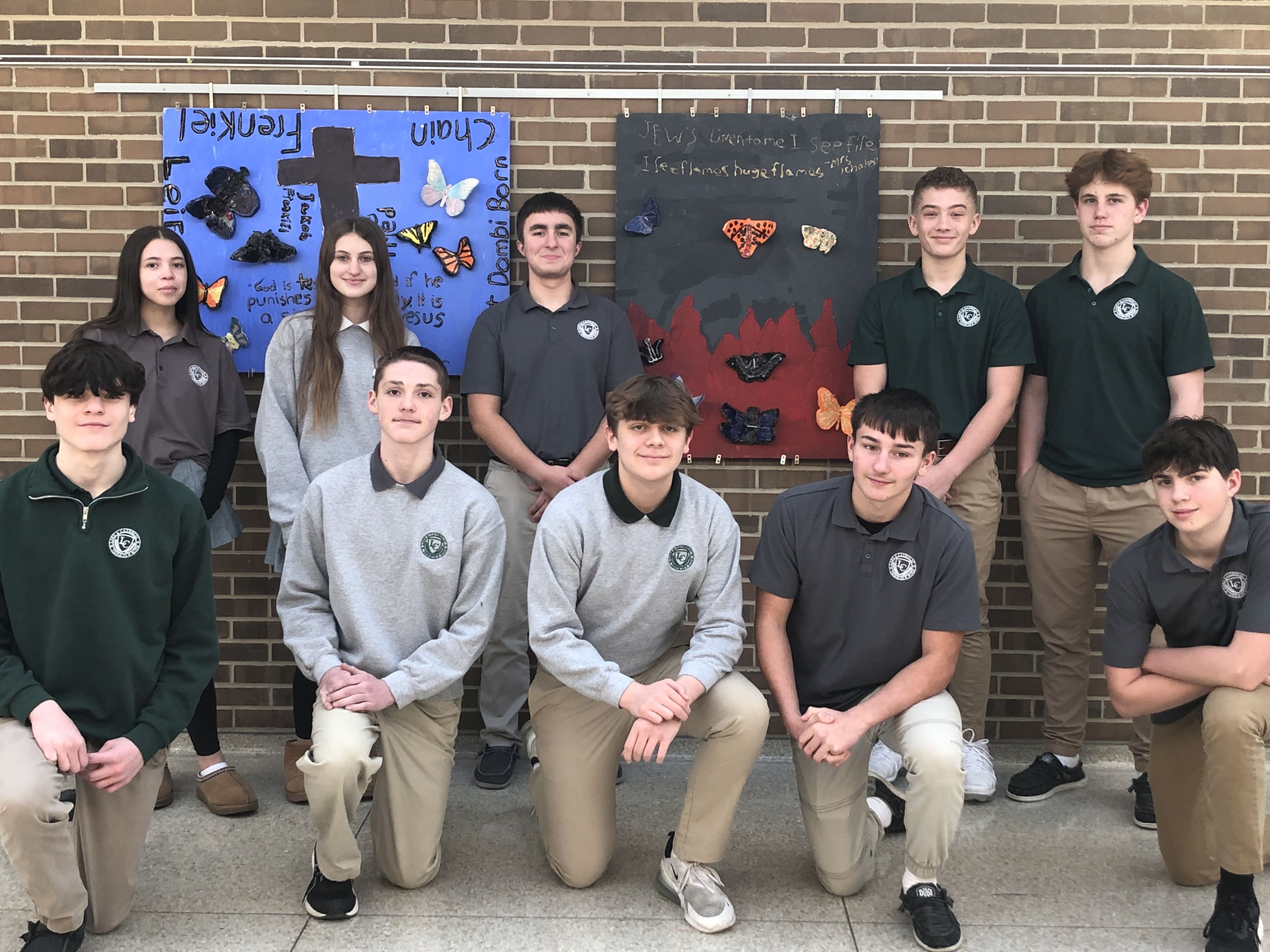
Recent Posts
Discover Lake Catholic
Discover yourself, your faith, your future, your purpose. Become a member of the Lake Catholic Family.
